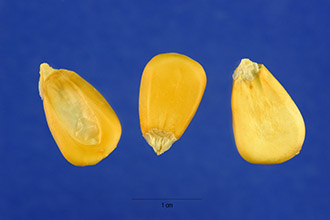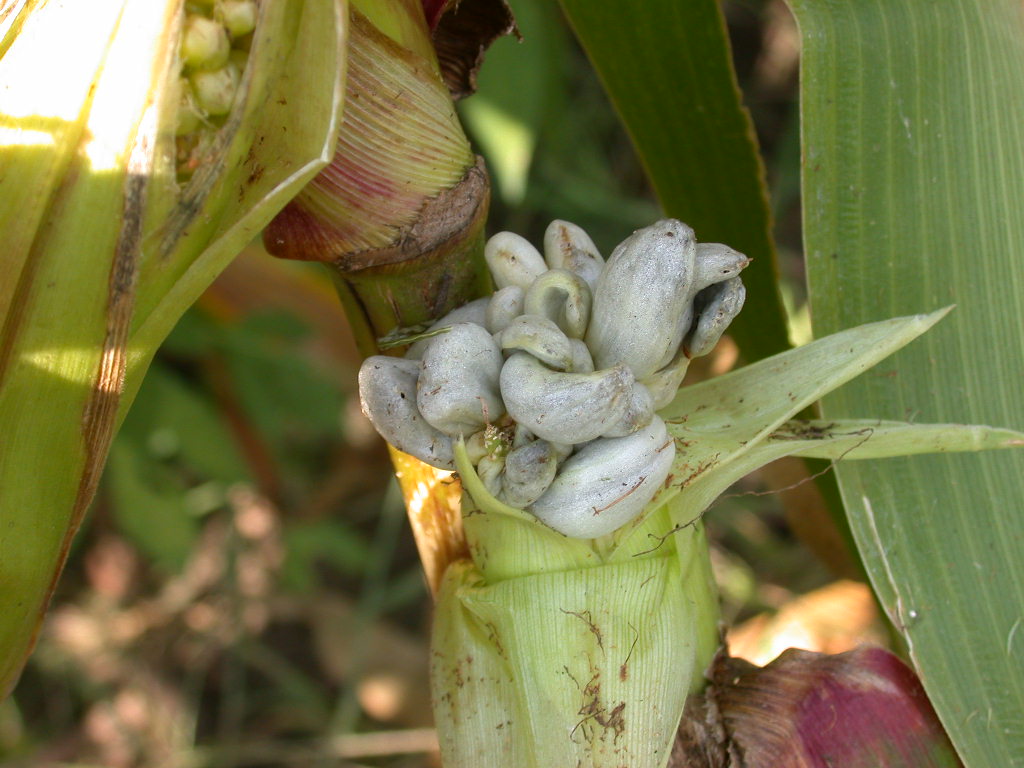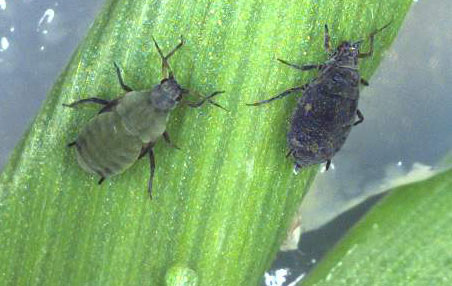
Nutrition of Zea mays
 Zea mays
absorbs nutrients from the soil with the use of its roots. The nutrients
required for the growth of sweet corn are nitrogen, phosphorus and
potassium. The soil conditions must be neutral to acidic for growth to
occur. These are added through chemical fertilizers and manure. Since it is autotrophic,
Zea mays produces
its own sugars through photosynthesis. It stores food as cellulose
within its cells. Growing conditions for Zea mays is also explained in
the
Habitat portion of this website.
Zea mays
absorbs nutrients from the soil with the use of its roots. The nutrients
required for the growth of sweet corn are nitrogen, phosphorus and
potassium. The soil conditions must be neutral to acidic for growth to
occur. These are added through chemical fertilizers and manure. Since it is autotrophic,
Zea mays produces
its own sugars through photosynthesis. It stores food as cellulose
within its cells. Growing conditions for Zea mays is also explained in
the
Habitat portion of this website.
Pests and Disease
The major threats to the growth of corn are insects, birds, weeds and fungi. Many different types of fungi use sweet corn as a host, such as: Ustilago maydis, Sporisorium reilianum, Sclerophthora macrospora, Peronoscherospora sorghi. Farmers are able to control weeds with herbicides, seed-and root-eating insects with insecticides, and fungi with fungicides. With the development of GMOs (genetically modified organisms) farmers are able to plant corn seeds with genetic modifications to make them resistant to certain pests and diseases. To see how other species interact with Zea mays please see the Habitat portion of this website.
Common Diseases and Parasites that Affect Zea Mays
Many species have a parasitic relationship with Zea mays. This means the plant is harmed and the organism feeding off of it benefits. The type of interaction between the two organisms is a parasitic relationship. Many of these fungi and parasites can be avoided by using the proper growing conditions or using a hybrid seed. Here are a few diseases, parasites and fungi that affect Zea mays: Seed Rots and Seedling Blight: Fungi that commonly cause this disease are Pythium and Fusarium. These diseases usually take place when the soil is cold wet and poorly drained. Stalk Rot: The fungus that commonly causes this disease is Fusarium spp. This is considered the most destructive disease in corn. The fungus attacks the stalk when it is near or at maturity. It causes destruction of the pith in the stalk. Overall yield reduction in a crop is usually 10-20%.

Common Smut: This is cause by Ustilago maydis. Galls on the stalk of the corn are covered with a white membrane. This turns the inside of the gall into a powdery black mass of spores. In Mexico, common smut is considered a delicacy.
Other Parasites:
Nematodes: These worms decrease the
absorption of the root system. This leads to decreased growth,
yellowing, and a lower yield. More than forty different species of
nematodes have
been found on corn.
Dwarf
Mosaic Virus: The virus is transmitted by
12 different species of aphids. Plant growth is stunted and early
infection can lead to root and stalk rot and death.
growth,
yellowing, and a lower yield. More than forty different species of
nematodes have
been found on corn.
Dwarf
Mosaic Virus: The virus is transmitted by
12 different species of aphids. Plant growth is stunted and early
infection can lead to root and stalk rot and death.